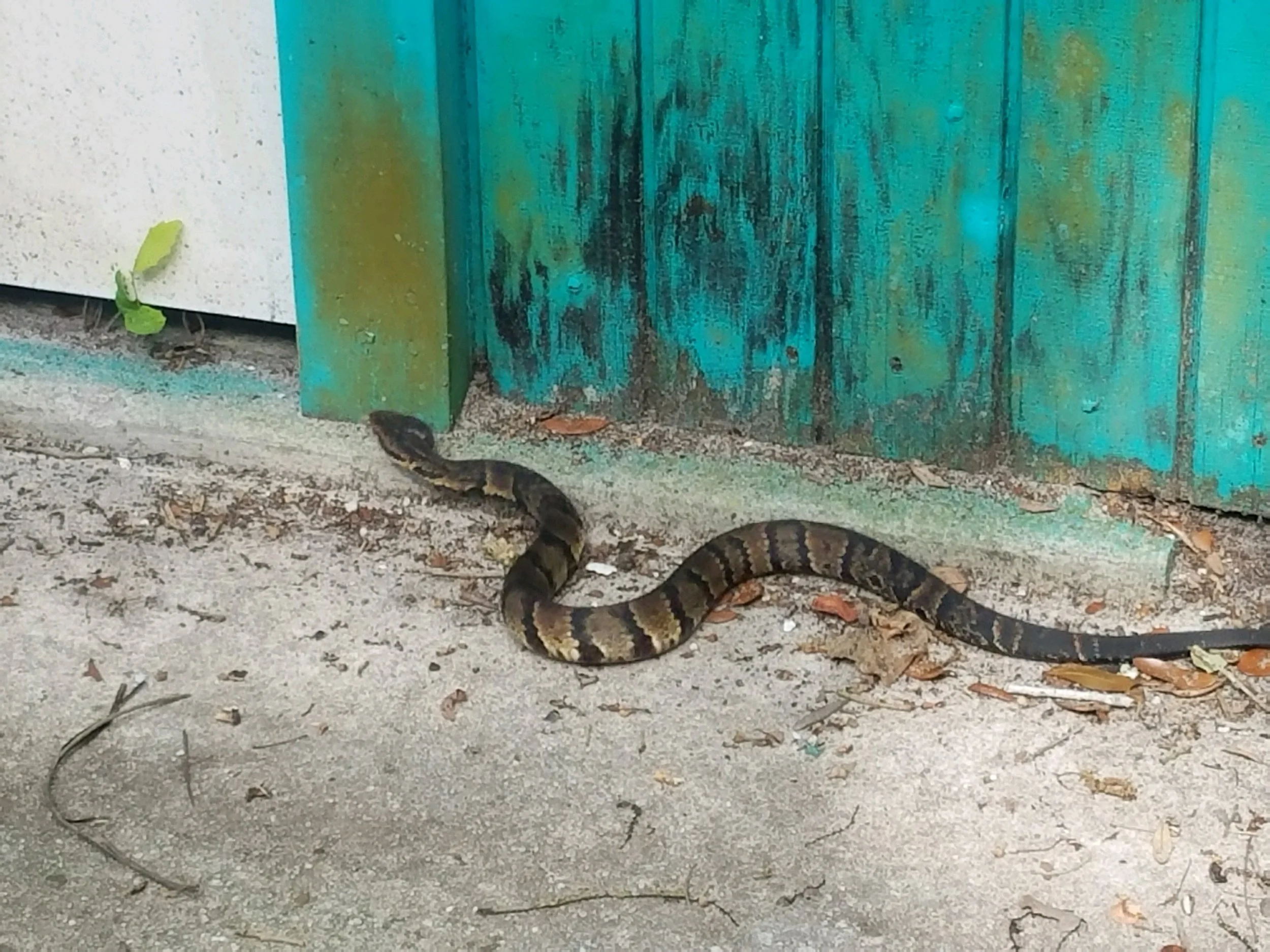Florida is home to 50 species of snakes, making up a significant part of our State’s natural ecology. Among these, only 6 species are venomous.The large number of species makes identifying which are venomous more difficult, and a mistake in identifying a venomous snakes vs. a non-venomous snake can be lethal. Most snakes are not aggressive towards humans and will scurry away upon approach. Attempting to pick up or handle a snake can trigger a defensive response, which is almost always lashing out to bite someone. The vast majority of snake bites come from attempts to unsafely handle a snake.
Q: Why am I suddenly seeing snakes on my property?
A: Snakes change their habitat according to conditions. If there is an increase in traffic, if more predators migrate into a snake’s domain or if heavy rain floods their habitat, they will seek another home. Snakes are also attracted to places with a ready food source. If you have squirrels, rats, or birds living on or near your property, they make a ready food source for snakes. Tree limbs hanging over or touching your roof can provide a natural access point, as can holes in the house’s foundation or roof line. Dead plant matter such as fallen leaves and branches left in a pile can make an attractive home for snakes.
Q: Which snakes are venomous?
A: These 6 species are venomous and extremely dangerous to handle.
pigmy rattlesnake
timber rattlesnake
copperhead
eastern diamondback rattlesnake
cottonmouth
eastern coral snake
Q: What is the treatment for snake bites?
A: Immediate medical attention to administer antivenin. The antivenin needed will depend on the species of snake that bit the victim. For this reason it is imperative to correctly identify a snake before handling it. Our trained Wildlife Specialists are able to not only identify but also trap and safely remove all Florida snakes. We also do exclusion work to keep them from coming back.

